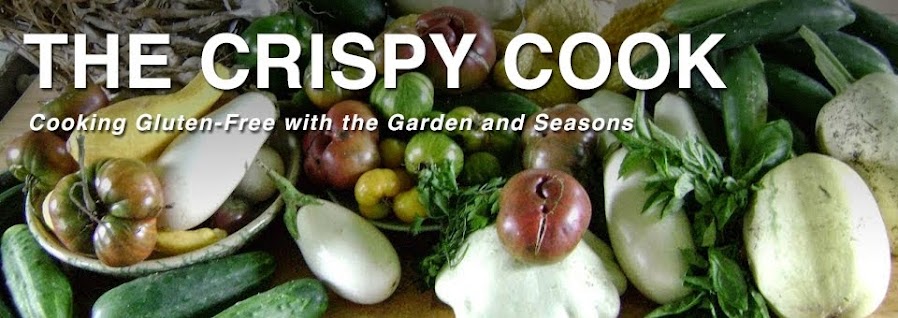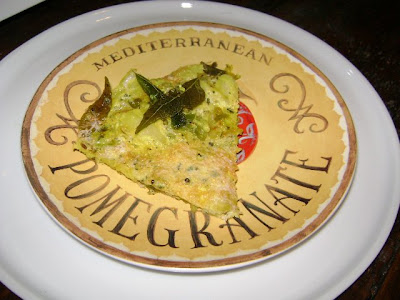Peter Mayle's "French Lessons: Adventures with Knife, Fork, and Corkscrew" is the current book pick for Cook the Books, the virtual book club for foodies, and like Mayle's other books about his adopted home, the writing captures his bemused impressions of the French landscape, the food, and the people. The Provence books capture life as an expat Englishman trying to adapt to a life where one's central priorities and the pace of life itself are quite different. And historic home renovations are not accomplished in a day, a month, a year, perhaps several years.

"French Lessons" is entirely about the French preoccupation with one's meals and the various food festivals that Mayle explores throughout France. We travel to many regions to celebrate frog legs, truffles, snails, spa cuisine, the sublime chickens of Bresse, Livarot cheese and other delights, and in my favorite chapter, "A Connoisseur's Marathon", are treated to the spectacle of the Marathon du Medoc, a long-distance road race in which 8,000 participants run 26 miles through the vineyards of Bordeaux. Only one quarter of the runners aspire to seriousness in the race (though the winner receives his/her weight in wine); the others are there to have fun, clad in crazy, cross-dressing costumes, and helping themselves to superior wines and gourmet snacks at civilized refreshment stations along the race course.
It is these kinds of vivid scenes, and Mayle's genial, self-deprecating sense of humor that made the book such an enjoyable read. Mayle describes his joy in reading a used book treasure that his wife bought him, "L'Escargot Comestible", in researching his upcoming snail festival sojourn:
"The text was scholarly in tone, and there were no unnecessary typographical flourishes. In other words, it was a serious piece of work, designed to inform students and breeders of the mollusk, rather than entertain snail diletantes like me. But serious work though it was, a Frenchman had written it. And so, inevitably, there was a recipe section".
I read "French Lessons" last month and it inspired me to attend two local food festivals in our area, Bennington's Garlic Festival and the Washington County Cheese Tour. After all that luscious cheese sampling, I wanted to try my hand at baking some pastry-wrapped Brie for a savory appetizer course for the mister and me one romantic day when both girls were out with their friends. Doing so when gluten is not your enemy is easy enough. Wrap one piece of store-bought Brie in some thawed store-bought puff pastry, heat it all up in the oven and then attack the gooey result with gusto. Alas, the gluten-free diner must approach this simple culinary project with the perusing of many wheatless pastry recipes and then attempt to cover their cheese without the whole crumbling, flopping over and sticking to rolling pins and countertops.
Surprisingly, I couldn't find a recipe online or in my arsenal of cookbooks for a gluten-free pastry-wrapped Brie. Clearly, there are unchartered waters here.
It was easy enough to find a luscious wedge of herb-infused Brie at the supermarket, but the pastry, which would have to be flaky when cooked and not outlandishly hard to maneuver around my cheese when raw, was a stumper. Eventually, I came upon this recipe on a cooking message board which seemed like a good launching point, though the pastry recipe was intended to house an appalling amalgam of kidney beans, maple syrup and raisins. I had a bag of white bean flour in my pantry and have made some garbanzo bean pie pastry in the past with success, so I set to it, with some tweaking here and there. Most notably, the pastry recipe called for 3/4 cup of cold water, which would have made an unworkable slurry rather than a good, workable crust, so that must be a misprint.
The experiment ended up a success (though the pumpkin pie I made with the remainder of my crust tasted a little too beany) and I would even have been proud to share a bite with Mayle himself. Here's how to make:
Baked Brie in a Savory Gluten-Free Pastry Crust
1 (1/2 lb.) wedge of Brie (I used President's double creme Herb Brie)
1-1/2 cups white bean flour
1/4 cup cornstarch
1 Tbsp. cornmeal
1 tsp. baking powder
3/4 tsp. salt
6 Tbsp. shortening (I used Butter-Flavored Crisco)
1 egg, separated
1/4 cup cold water
Let Brie sit, unwrapped, at room temperature, while you make your pastry.
Mix together white bean flour, cornstarch, cornmeal, baking powder and salt in mixing bowl. Cut in shortening with pastry blender until it resembles coarse crumbs. Mix together egg white and water. Add enough water to pastry mix to make it a smooth, workable dough. You may not need to add all this liquid.
Preheat oven to 375 degrees F.
Maneuver pastry into a ball and then squash it down between two sheets of plastic wrap. Parchment paper will not do, as the dough will stick to it and cause inappropriate amounts of cursing in the kitchen.
Roll dough out to about 1/4 inch thickness in a roughly rectangular shape. Peel off top layer of plastic wrap and then play your wedge of Brie, top side down, over your pastry. Wrap your cheese in the pastry, pressing down the seams to make your pastry case as hole-free as possible.
(I found that this pastry was very workable, kind of like working with fondant or that old childhood standby, Play Doh. The heat from your hands makes the pastry seams come together very easily and the one advantage that this pastry has over regular wheat flour pastry, is that you can work it over and over without the dough becoming tough. Without the tough strands of gluten, you can keep handling your doughy mistakes over a long period of time. The dough smells very strongly of raw beans when raw, but it will change to a much pleasanter aroma when baked.)
Grease a glass pie pan with some extra shortening and then flop your pastry-wrapped cheese right-side up in your pan. Again, the dough is eminently pliable, so you can adorn it with fancy pastry scraps. I gave my Brie a pastry boutonniere for a little extra Gallic elegance.
Whisk up your remaining egg yolk and brush over the top of your pastry. You are now ready to bake your Brie!

Bake your production at 375 degrees F. for 15-20 minutes, or until pastry is golden brown and melting Brie has popped the seams of its pastry shell.
Makes 4-6 appetizer servings.
We ate this for Second Breakfast on a rainy mid-morning, but I imagine that this luscious cheese experiment would be wonderful as a romantic meal paired with grapes, pears and a bottle of lusty red wine.
Note: This makes enough pastry to wrap 3 wedges of Brie. I used the remainder of my pastry to make a 9 inch pastry shell for a pumpkin pie (the crust edges burned so next time I would cover the rim with foil), but I would imagine one could freeze the remainder into pastry logs to freeze and roll out another day.

Please join in the fun when our current Cook the Books hostess, Jo of Food Junkie, Not Junk Food, rounds up the blog posts about "French Lessons" and the foods we cook up inspired by our reading. The deadline to do so is November 8th, and then it will be my turn to host this fun, bimonthly biblio-foodie fiesta. Anyone can participate in Cook the Books as long as they read the selected book and blog about it and some edible inspiration.























